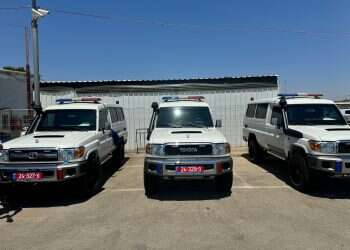Researchers at the University of Haifa School of Marine Sciences, in collaboration with the Israel Antiquities Authority, have uncovered evidence of a tsunami deposit along the Caesarea Maritima coastline, which could help scientists both understand how the region reacted to past natural disasters and predict future outcomes.
Follow Israel Hayom on Facebook, Twitter, and Instagram
In a paper led by National Geographic Explorer Dr. Beverly Goodman Tchernov and Charles J. Everhardt IV of University of Haifa in the Geosciences journal, the researchers outline evidence of a tsunami that coincided with a powerful inland earthquake in 749 BCE along the Dead Sea Fault, which caused well-documented damage throughout the Levant at the time.
"This study gives us very important data points for potential tsunamis that will arrive in the future," said Dr. Goodman Tchernov, Scientific Director of University of Haifa's Azrieli Marine Geohazards and Climate Solutions Hub. "It informs us about potential risks and what we need to be prepared for. By examining a portion of the remains of a disaster of the past, it gives us a better sense of where the risk zones along the coast are."
This discovery could contribute to a broader understanding of tsunami dynamics, tsunami deposit preservation, and the overall history of the Caesarea Maritima, as modern, historical, and paleotsunami deposits are critical for guiding coastal disaster management and risk assessment.




